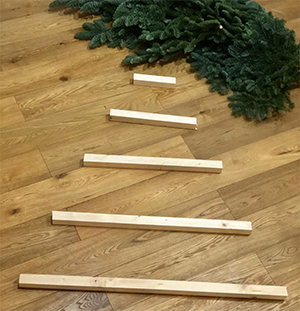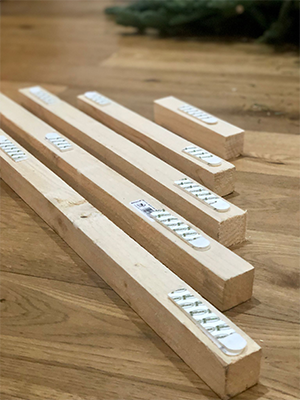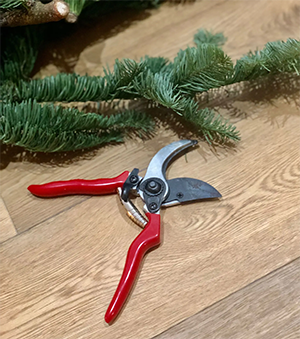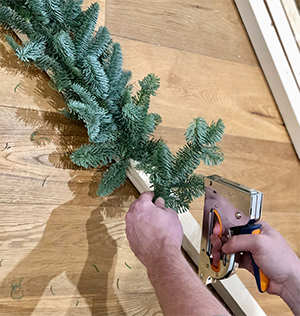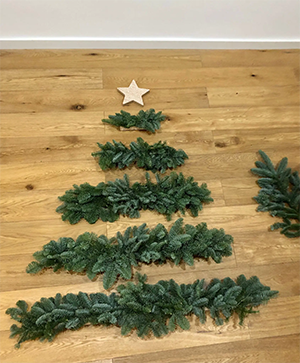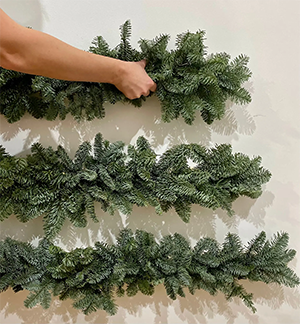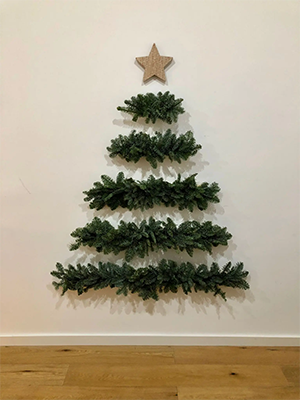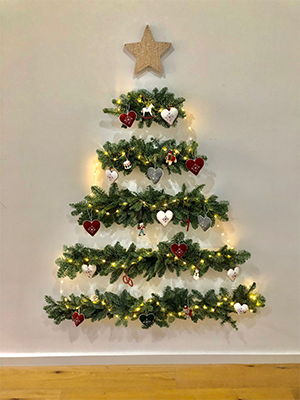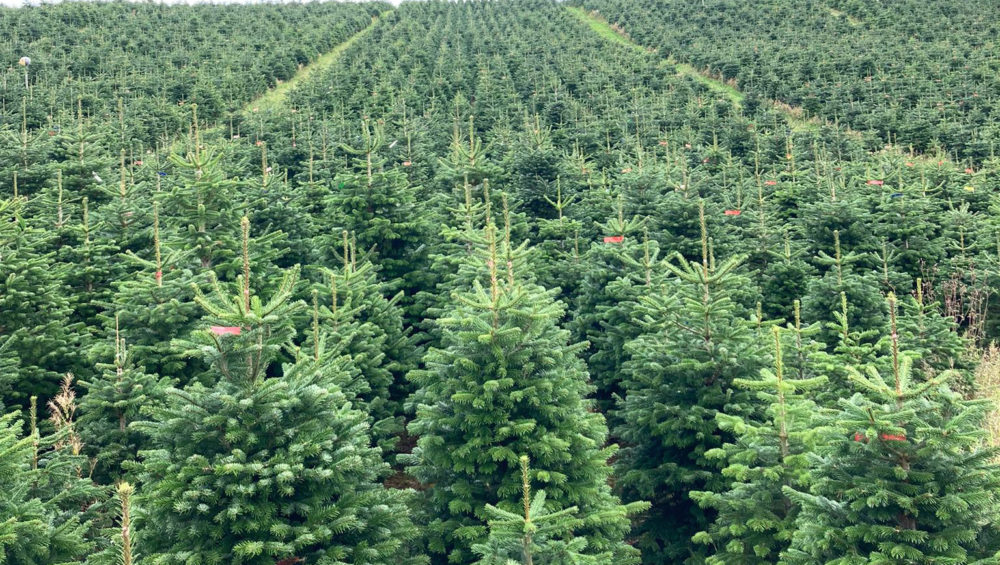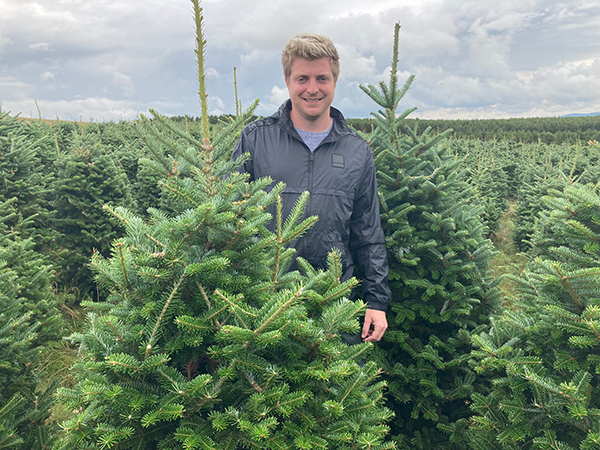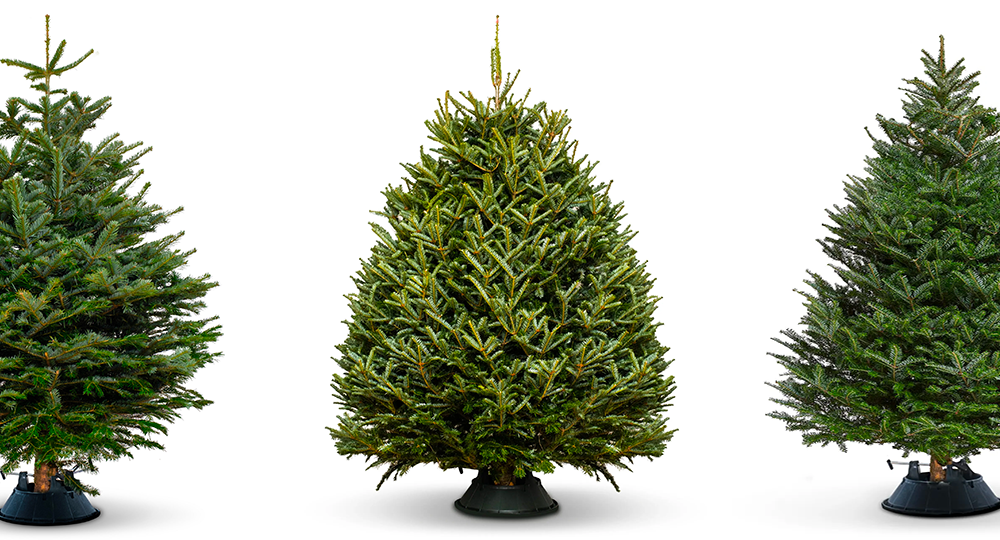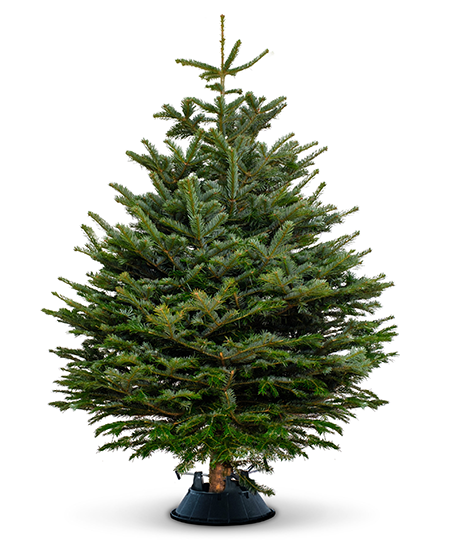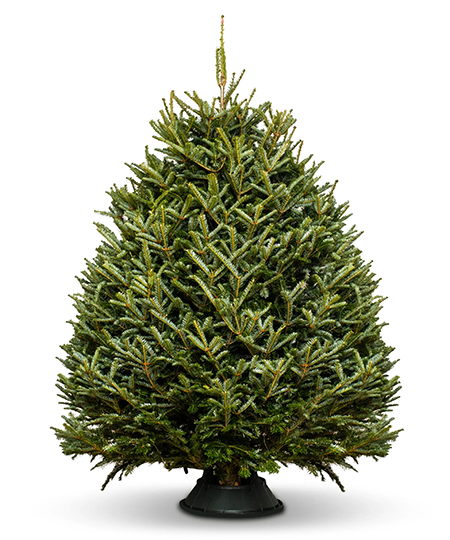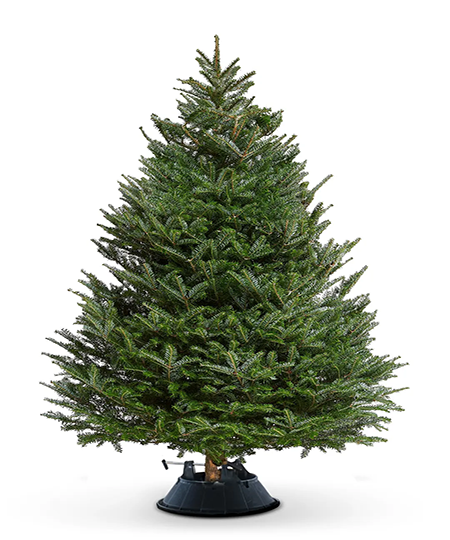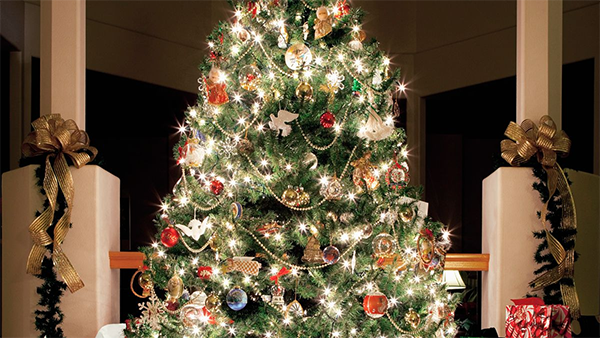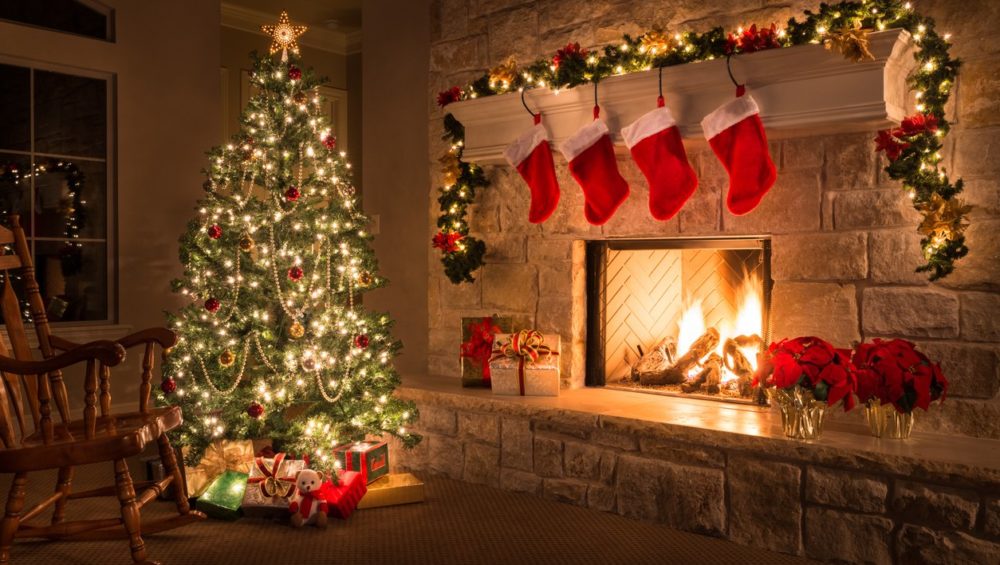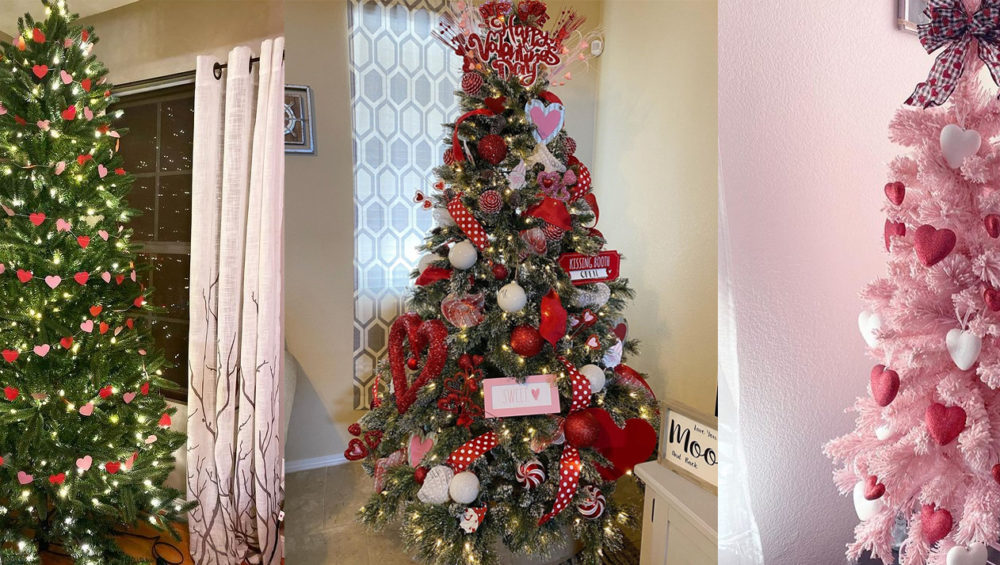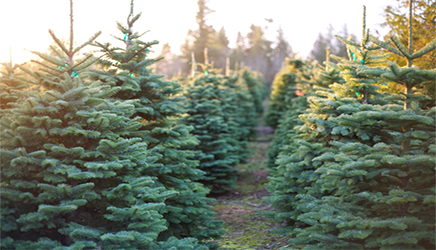Charity Christmas Tree Collections Across The UK
The way you dispose of Christmas tree can make a big difference to the environment. Recycling your tree can reduce the environmental impact by up to 80% compared to if your tree ends up in a landfill.
After Christmas, many charities, hospices and organisations have volunteers who will come and collect and recycle your tree for a small suggested donation, so you can help to raise money for a good cause, and be kinder to the environment at the same time.
We’ve created a list of all of these organisations we could find across the UK below. If you spot any we have missed, please contact us so we can add it.
Filter By Location
North West
Yorkshire
North East
West Midlands
East Midlands
London
Wales
Northern Ireland
North West
Cheshire
Collection Area: CW12, SK9, SK10, SK11, SK12 & WA16
Collection Area: WA1 to WA5 and WA13
Collection Area: CW 1 2 4 5 6 7 8 9 10 and 11
Cumbria
Collection Area: CA1, CA2, CA3, CA4 8, CA5 6, CA5 7, CA6 4, CA6 5, CA7 9, CA8 1, CA8 9, CA10 2, CA11 7, CA11 8, CA11 9, CA11 0
Collection Area: LA11, LA12, LA13, LA14, LA15, LA16, LA17, LA18, LA19, LA20
Greater Manchester
Collection Area: M20, M21, M22, M23, M27, M28, M30, M32, M33, M41, M44, SK1, SK2, SK3, SK3, SK4, SK5, SK6, SK7, SK8, WA14, WA15
Collection Area: OL1, OL2, OL10, OL11, OL12, OL13, OL14, OL15,OL16, M24
Collection Area: BL0, BL8, BL9, M25, M26 and M45 postcode areas – and Ainsworth, Bradley Fold, Harwood and Bradshaw
Lancashire
Collection Area: LA1, LA2, LA3, LA4, LA5, LA6, LA7, LA8, LA9, LA22, LA23 and PR31
Collection Area: FY1, FY2, FY3, FY4, FY5, FY6, FY8 and PR4
Collection Area: Fernhurst, Oakdale, Lower Darwen, Darwen, Whalley, Clitheroe, Oswaldtwistle or Mellor
Merseyside
Collection Area: Every Wirral postcode area is eligible to register
Collection Area: L14, L28, L34, L35, L36, WA9, WA10, WA11, WA12 WN5 (not Orrell)
Collection Area: PR8, PR9, PR4 6, L37, L39, L40 & WN8
Yorkshire
South Yorkshire
Bluebell Wood Children’s Hospice
Collection Area: Barnsley, Chesterfield, Doncaster, Rotherham, Sheffield and Worksop
West Yorkshire
Forget Me Not Children’s Hospice
Collection Area: WF 4, 12, 13, 14, 15, 16, 17, HD 1, 2, 3, 4, 5, 6, 7, 8, 9, HX 1, 2, 3, 4, 5, 6, 7, BD 4, 11, 12, 13, 19, OL 13, 14, LS 28
Collection Area: HX, HD6, OL14, BD13
Collection Area: LS6, LS7, LS8, LS14, LS15, LS16, LS17, LS18, LS28
Collection Area: BD13, BD14, BD15, BD16, BD17, BD18, BD20, BD21, BD22, BD23, BD24 and LS29
Collection Area: HD1, HD2, HD3, HD4, HD5, HD7 4, HD7 5, HD8, HD9 (exc HD9 2), BD19, WF13, WF14, WF15, WF16, WF17
Collection Area: WF4 1, WF4 2, WF6, WF7, WF8, WF9, WF10, WF11, LS25 5 & LS25 7
Collection Area: WF1, WF2, WF3, WF4, WF5, LS26, LS27 and S75
North East
Durham
Collection Area: DH1, DH2, DH3, DH6, and DH7
Collection Area: Check website
Collection Area: Check website
Tyne and Wear
Collection Area: NE1-NE18, NE20-NE22, NE23-NE30, NE39-NE42, NE62-64
West Midlands
Birmingham
Collection Area: B13, B14, B15, B16, B17, B23, B24, B25, B26, B27, B28, B29, B30, B31, B32, B38, B45, B47, B48, B62, B67, B68, B72, B73, B76, B90, B91, B92, B93, B94
Collection Area: B13, B14, B15, B16, B17, B23, B24, B25, B26, B27, B28, B29, B30, B31, B32, B38, B45, B47, B48, B62, B67, B68, B72, B73, B76, B90, B91, B92, B93, B94
Herefordshire
Collection Area: Check website
Staffordshire
Collection Area: ST1 / ST2 / ST3 / ST4 / ST5 / ST6 / ST7 / ST9 / ST11 / ST12
Collection Area: Lichfield, Walsall, Sutton Coldfield, Tamworth, Burton, Rugeley, Burntwood, Uttoxeter, Swadlincote, Stafford and surrounding areas.
Warwickshire
Myton HospiceCollection Area: Check website
Worcestershire
Grace Kelly Childhood Cancer Trust
Collection Area: B60, B61, B96, B97, Barnt Green, Alvechurch, Feckenham and Inkberrow, WR1, WR3, WR4, WR5, WR7, WR9, WR10, St John’s Worcester and the villages local to the charity to include: Crowle, Upton Snodsbury, Broughton Hacket, White Ladies Aston and Drakes Broughton.
Collection Area: B62, B63, B64, DY1, DY2, DY3, DY4, DY5, DY6, DY7, DY8, DY9, WV5.
Collection Area: WR1, WR2, WR3, WR4, WR5, WR7, WR8, WR9, WR10, WR11, WR12, WR13, WR14
Collection Area: B90.1 / B92.2 / B94.5 / B47.5 / B47.6 / B48.7 / B98.7 /B38.3 / B38.8 / B38.9
East Midlands
Derbyshire
Collection Area: S18, S40, S41, S42, S43, DE4 (3 only – Matlock, Matlock Bath and Cromford area)
Leicestershire
Collection Area: Melton Mowbray
Lincolnshire
Collection Area: LN11
Collection Area: LN1, LN2, LN3, LN4, LN5, LN6, LN8, DN21, NG31, NG32, NG33, NG34, PE9
Northamptonshire
Collection Area: All houses within NN8, NN15 and Limited areas within, NN16, NN9, NN14 and NN29
Nottinghamshire
Collection Area: NG1, NG2, NG3, NG4, NG5, NG6, NG7, NG8, NG9, NG10, NG11, NG12, NG14, NG15, NG16, NG18
East
Cambridgeshire
Collection Area: CB1, CB2, CB3, CB4, CB5, CB21, CB22, CB23, CB24 and all postcodes in Waterbeach.
East Anglia’s Children’s Hospices
Collection Area: PE19, PE27, PE28, PE29, CB6, CB7
Essex
Collection Area: CB10, CB11, CM17, CM18, CM19, CM20, CM21, CM22, CM23, CM24, CM6 1, CM6 2, CM16, CM5, EN9
Collection Area: CM13, CM14, CM15 and CM4 0
Collection Area: SS5, SS6, SS7 and SS9
Collection Area: CM0, CM1, CM2, CM3, CM4 9, CM6 3, CM7, CM77, CM8, CM9, and some postcodes within CO5 9 & CO6 1
Collection Area: CO1 to CO9, CO11 and CO13 to CO16
Hertfordshire
Collection Area: AL1, AL2, AL3, AL4, AL5, HP1, HP2 HP3, HP4, WD4, WD5, HP23
Collection Area: AL6, AL7 1, AL7 2, AL7 3, AL7 4, AL8, AL9, AL10 0, AL10 8, AL10 9, SG2 7, SG3 6, SG9, SG10, SG11, SG12 0, SG12 7, SG12 8, SG12 9, SG13 7, SG13 8 and SG14
Collection Area: Stevenage, North Herts, South Bedfordshire and surrounding areas
Norfolk
East Anglia’s Children’s Hospices
Collection Area: NR1, NR2, NR3, NR4, NR5, NR6, NR7, NR8, NR9 3, NR14 7, NR18 0, NR19 1, NR20 3, NR25 6, NR26, NR27, IP22 4
Suffolk
Collection Area: IP24, IP28, IP29, IP30, IP31, IP32, IP33, IP27, CO10, CB8, CB9
Collection Area: IP1, IP2, IP3, IP4, IP5, IP6, IP7, IP8, IP9 IP10, IP11, IP12, IP13, IP14
East Anglia’s Children’s Hospices
Collection Area: IP1, IP2, IP3, IP4, IP5, IP6, IP7, IP8, IP9, IP10, IP11, IP12, IP13, IP14
South West
Bristol
Collection Area: BS4, BS5, BS7, BS9, BS15, BS16, BS20, BS21 with a limited collection in BS41 and BS48
Devon
Collection Area: EX31, EX32, EX33, TQ1, TQ2, TA1, TA2, TA3
Collection Area: EX1, EX2, EX3, EX4, EX8, EX14 1, EX14 2, EX14 3
Dorset
Collection Area: BH3, BH4, BH5, BH6, BH7, BH8, BH9, BH10, BH11, BH12, BH13, BH14, BH15, BH16, BH17, BH18, BH21, BH22, BH23 1, BH23 2, BH23 3, BH31
Collection Area: DT1, DT2, DT3, DT4, DT5, DT6, DT8, DT9, DT10, DT11
Somerset
Collection Area: BA5, BA20, BA21 and BA22 8 and BA22 9, TA1, TA2, TA3 5, TA3 6, TA4 1, TA4 2, TA4 3, TA5 2, TA6 3, TA6 4, TA6 5, TA6 7, TA21 8, TA21 9
Collection Area: BA1, BA2, BA3, BA4, BA11, BA12, BA13, BA14, BA15, SN12, SN13, SN14, SN15, BS31, SN11 and SN16.
Wiltshire
Collection Area: P1, SP2, SP3, SP4, SP5, SP6, SP7 (new for this collection) and SP9
South East
Berkshire
Collection Area: Datchet, Wraysbury, Horton and SL4, SL5
Buckinghamshire
Collection Area: MK1 – MK17, MK19, MK43, MK46 and LU7
East Sussex
Collection Area: BN3 2, BN3 3, BN3 4, BN3 5 & BN3 6
Hampshire
Collection Area: BH1 – BH23
Kent
Collection Area: Check website
Collection Area: ME14 3 – ME14 4 – ME14 5, ME15 6 – ME15 7 – ME15 8, ME16 0 – ME16 8, ME19 4 – ME19 6, ME20 6 – ME20 7
Collection Area: SP7, SP8
Demelza – Hospice Care for Children
Collection Area: ME8, ME9, ME10, TN1, TN2, TN4, TN9, TN10
Oxfordshire
Collection Area: Various OX7 and OX15 postcodes
Surrey
Collection Area: KT6, KT7, KT8, KT10 0xx and KT10 8xx
Collection Area: KT8, KT10, KT11, KT12, KT13
West Sussex
Collection Area: PO18 to PO22
Chestnut Tree House Children’s Hospice
Collection Area: Bognor Regis, Brighton and Hove, Crawley, Shoreham-by-Sea or Southwick
Collection Area: Horsham Town and the surrounding villages of: Barns Green, Broadbridge Heath, Colgate, Cowfold, Faygate, Mannings Heath, Rudgwick, Rusper, Slinfold, Shipley, Southwater and Warnham.
London
East London
Collection Area: IG7, IG8, IG9, IG10, E4, E11 1, E11 2, E12 5, E18
Collection Area: RM1, RM2, RM3, RM4, RM5, RM6, RM7, RM11, RM12, RM13, RM14.
South London
Demelza – Hospice Care for Children
Collection Area: BR1, BR5, BR7
Wales
Denbighshire
Collection Area: LL15, LL16, LL17, LL18, LL19, LL22, L28, LL29, CH6 and CH8
Pembrokeshire
Collection Area: Check website
Wrexham
Collection Area: Check website
Northern Ireland
Belfast
Collection Area: North Belfast and the Newtownabbey Borough Council area.
Channel Islands
Jersey
Collection Area: Across the island
Guernsey
Collection Area: Check website



